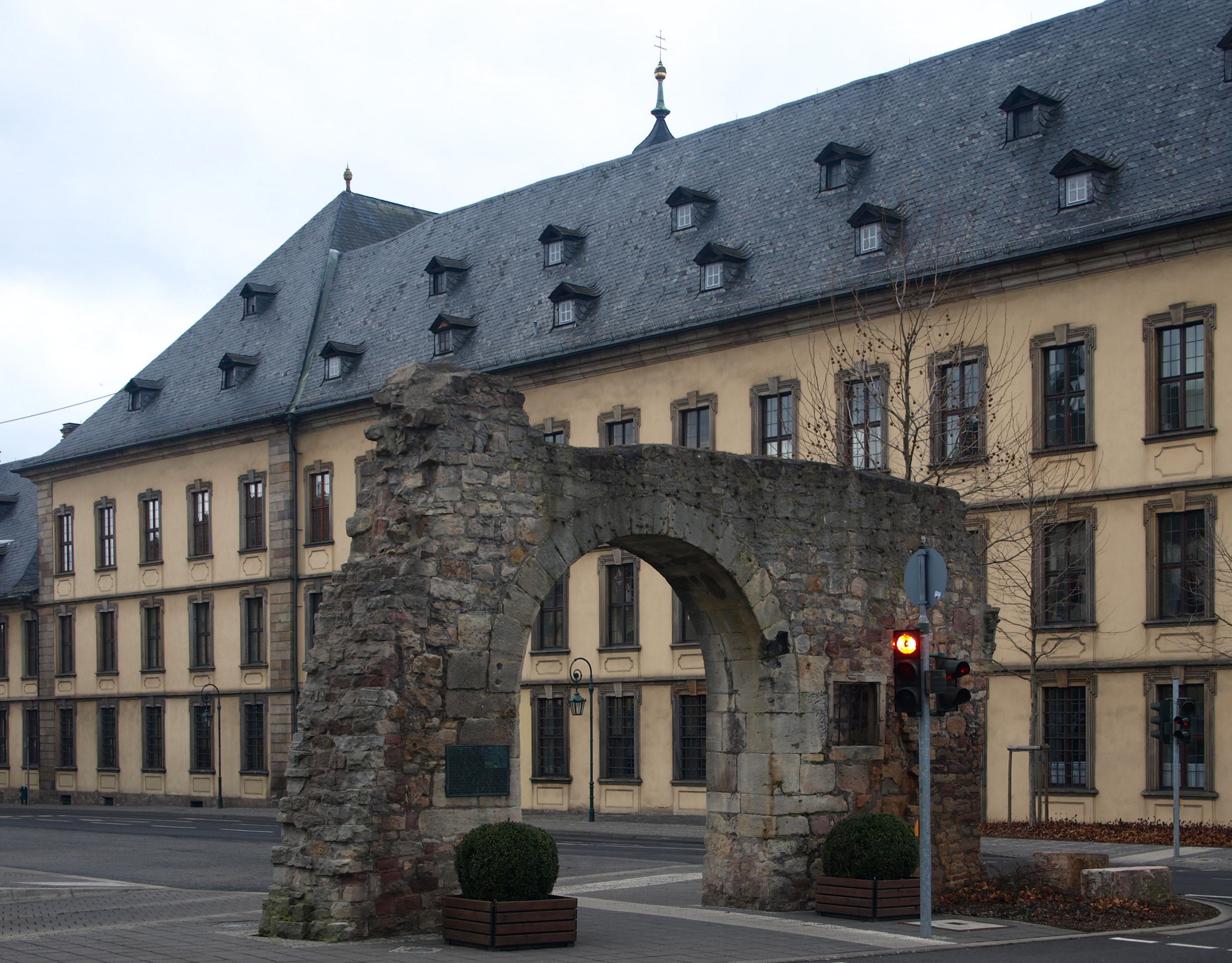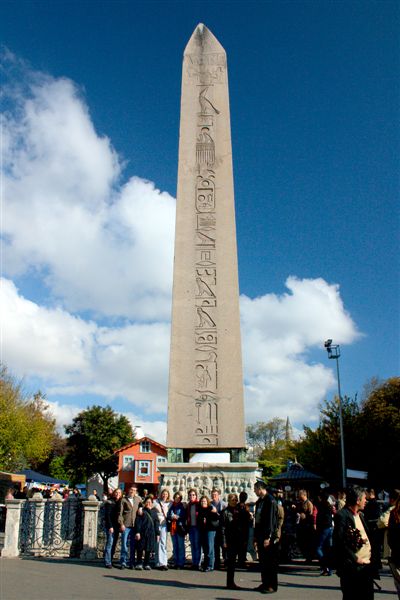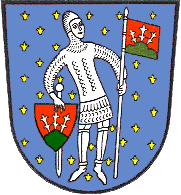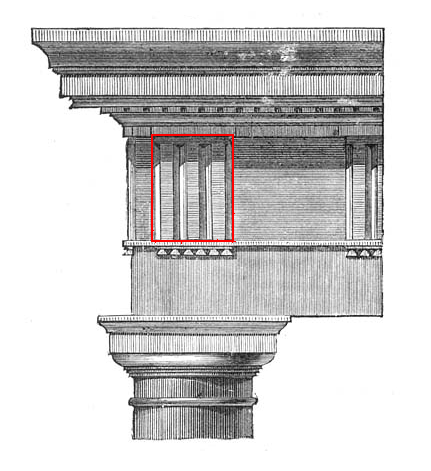|
Fulda Cathedral
Fulda Cathedral (, also ''Sankt Salvator'') is the former abbey church of Fulda Abbey and the burial place of Saint Boniface. Since 1752 it has also been the cathedral of the Diocese of Fulda, of which the Prince-Abbots of Fulda were created bishops. The abbey was dissolved in 1802 but the diocese and its cathedral have continued. The dedication is to Christ the Saviour (). The cathedral constitutes the high point of the Baroque architecture, Baroque district of Fulda, and is a symbol of the town. History The present cathedral stands on the site of the Ratgar Basilica (once the largest basilica north of the Alps), which was the burial site of Saint Boniface and the church of Fulda Abbey, functions which the new building was intended to continue. The plans of the new church were drawn up in 1700 by one of the greatest German Baroque architects, Johann Dientzenhofer, who was commissioned by the Prince-Abbot Adalbert von Schleifras for the new building on the recommendation of the ... [...More Info...] [...Related Items...] OR: [Wikipedia] [Google] [Baidu] |
Fulda
Fulda () (historically in English called Fuld) is a city in Hesse, Germany; it is located on the river Fulda and is the administrative seat of the Fulda district (''Kreis''). In 1990, the city hosted the 30th Hessentag state festival. History Middle Ages In 744 Saint Sturm, a disciple of Saint Boniface, founded the Benedictine monastery of Fulda as one of Boniface's outposts in the reorganization of the church in Germany. The initial grant for the abbey was signed by Carloman, Mayor of the Palace in Austrasia (in office 741–47), the son of Charles Martel. The support of the Mayors of the Palace, and later of the early Pippinid and Carolingian rulers, was important to Boniface's success. Fulda also received support from many of the leading families of the Carolingian world. Sturm, whose tenure as abbot lasted from 747 until 779, was most likely related to the Agilolfing dukes of Bavaria. Fulda also received large and constant donations from the Etichonids, a lea ... [...More Info...] [...Related Items...] OR: [Wikipedia] [Google] [Baidu] |
Pope John Paul II
Pope John Paul II (born Karol Józef Wojtyła; 18 May 19202 April 2005) was head of the Catholic Church and sovereign of the Vatican City State from 16 October 1978 until Death and funeral of Pope John Paul II, his death in 2005. In his youth, Wojtyła dabbled in stage acting. He graduated with excellent grades from an All-boys school, all-boys high school in Wadowice, Poland, in 1938, soon after which World War II broke out. During the war, to avoid being kidnapped and sent to a Forced labour under German rule during World War II, German forced labour camp, he signed up for work in harsh conditions in a quarry. Wojtyła eventually took up acting and developed a love for the profession and participated at a local theatre. The linguistically skilled Wojtyła wanted to study Polish language, Polish at university. Encouraged by a conversation with Adam Stefan Sapieha, he decided to study theology and become a priest. Eventually, Wojtyła rose to the position of Archbishop of Kra ... [...More Info...] [...Related Items...] OR: [Wikipedia] [Google] [Baidu] |
Obelisk
An obelisk (; , diminutive of (') ' spit, nail, pointed pillar') is a tall, slender, tapered monument with four sides and a pyramidal or pyramidion top. Originally constructed by Ancient Egyptians and called ''tekhenu'', the Greeks used the Greek term to describe them, and this word passed into Latin and ultimately English. Though William Thomas used the term correctly in his ''Historie of Italie'' of 1549, by the late sixteenth century (after reduced contact with Italy following the excommunication of Queen Elizabeth), Shakespeare failed to distinguish between pyramids and obelisks in his plays and sonnets. Ancient obelisks are monolithic and consist of a single stone; most modern obelisks are made of several stones. Ancient obelisks Egyptian Obelisks were prominent in the architecture of the ancient Egyptians, and played a vital role in their religion placing them in pairs at the entrance of the temples. The word "obelisk" as used in English today is of Greek rathe ... [...More Info...] [...Related Items...] OR: [Wikipedia] [Google] [Baidu] |
Simplicius And Faustinus
Saints Simplicius, Faustinus and Beatrix (or ''Beatrice, Viatrix'') were siblings martyred in Rome during the Diocletian persecution (302 or 303). Legend The legend about them is that the brothers Simplicius and Faustinus were cruelly tortured on account of their Christian faith, beaten with clubs, and finally beheaded; their bodies were thrown into the Tiber (according to another version a stone was tied to them and they were drowned). Their sister Beatrix had the bodies drawn out of the water and buried.Löffler, Klemens. "Simplicius, Faustinus, and Beatrice." The Catholic Encyclopedia Vol. 14. New York: Robert Appleton Company, 1912. 9 December 2021 Beatrix is thought to be a manuscript corruption of the name "Viatrix". Then for seven months she li ... [...More Info...] [...Related Items...] OR: [Wikipedia] [Google] [Baidu] |
Balthasar Esterbauer
Balthazar, Balthasar, Baltasar, or Baltazar may refer to: Arts, entertainment and media * ''Balthazar'' (novel), by Lawrence Durrell, 1958 * ''Balthasar'', an 1889 book by Anatole France * '' Professor Balthazar'', a Croatian animated TV series, 1967–1978 * ''Balthazar'' (TV series), a 2018 French crime thriller drama * Balthazar (band), a Belgian indie pop and rock group * DJ Balthazar, a Bulgarian group * '' Au hasard Balthazar'', a 1966 French film directed by Robert Bresson People Footballers * Baltasar (footballer) (born 1966), Portuguese footballer * Baltasar Gonçalves (born 1948), or Baltasar, Portuguese footballer * Baltazar (footballer, born 1926) (1926–1997), Oswaldo da Silva, Brazilian football striker * Baltasar (footballer, born 1933) (1933–2019), Egydio Felizardo, Brazilian football striker * Baltazar (footballer, born 1959), Baltazar Maria de Morais Júnior, Brazilian football striker * Marco Balthazar (born 1983), Brazilian footballer * Batata ... [...More Info...] [...Related Items...] OR: [Wikipedia] [Google] [Baidu] |
Cornice
In architecture, a cornice (from the Italian ''cornice'' meaning "ledge") is generally any horizontal decorative Moulding (decorative), moulding that crowns a building or furniture element—for example, the cornice over a door or window, around the top edge of a pedestal, or along the top of an interior wall. A simple cornice may be formed with a crown, as in crown moulding atop an interior wall or above kitchen cabinets or a bookcase. A projecting cornice on a building has the function of throwing rainwater free of its walls. In residential building practice, this function is handled by projecting gable ends, roof eaves, and rain gutter, gutters. However, house eaves may also be called "cornices" if they are finished with decorative moulding. In this sense, while most cornices are also eaves (overhanging the sides of the building), not all eaves are usually considered cornices. Eaves are primarily functional and not necessarily decorative, while cornices have a decorative a ... [...More Info...] [...Related Items...] OR: [Wikipedia] [Google] [Baidu] |
Triglyphs
Triglyph is an architectural term for the vertically channeled tablets of the Doric order, Doric frieze in classical architecture, so called because of the angular channels in them. The rectangular recessed spaces between the triglyphs on a Doric frieze are called metope (architecture), metopes. The raised spaces between the channels themselves (within a triglyph) are called ''femur'' in Latin or ''meros'' in Greek. In the strict tradition of classical architecture, a set of guttae, the six triangular "pegs" below, always go with a triglyph above (and vice versa), and the pair of features are only found in entablatures of buildings using the Doric order. The absence of the pair effectively converts a building from being in the Doric order to being in the Tuscan order. The triglyph is largely thought to be a tectonic and skeuomorphic representation in stone of the wooden beam ends of the typical primitive hut, as described by Vitruvius and Renaissance writers. The wooden beams w ... [...More Info...] [...Related Items...] OR: [Wikipedia] [Google] [Baidu] |
Frieze
In classical architecture, the frieze is the wide central section of an entablature and may be plain in the Ionic order, Ionic or Corinthian order, Corinthian orders, or decorated with bas-reliefs. Patera (architecture), Paterae are also usually used to decorate friezes. Even when neither column (architecture), columns nor pilasters are expressed, on an astylar wall it lies upon the architrave ("main beam") and is capped by the molding (decorative), moldings of the cornice (architecture), cornice. A frieze can be found on many Greek and Roman buildings, the Parthenon Frieze being the most famous, and perhaps the most elaborate. In interiors, the frieze of a room is the section of wall above the picture rail and under the crown moldings or cornice. By extension, a frieze is a long stretch of painting, painted, sculpture, sculpted or even calligraphy, calligraphic decoration in such a position, normally above eye-level. Frieze decorations may depict scenes in a sequence of ... [...More Info...] [...Related Items...] OR: [Wikipedia] [Google] [Baidu] |
Architrave
In classical architecture, an architrave (; , also called an epistyle; ) is the lintel or beam, typically made of wood or stone, that rests on the capitals of columns. The term can also apply to all sides, including the vertical members, of a frame with mouldings around a door or window. The word "architrave" has come to be used to refer more generally to a style of mouldings (or other elements) framing a door, window or other rectangular opening, where the horizontal "head" casing extends across the tops of the vertical side casings where the elements join (forming a butt joint, as opposed to a miter joint). Classical architecture In an entablature in classical architecture, it is the lowest part, below the frieze and cornice. The word is derived from the Greek and Latin words ''arche'' and ''trabs'' combined to mean "main beam". The architrave is different in the different Classical orders. In the Tuscan order, it only consists of a plain face, crowned with a fill ... [...More Info...] [...Related Items...] OR: [Wikipedia] [Google] [Baidu] |
Fulda Dom Maineast
Fulda () (historically in English called Fuld) is a city in Hesse, Germany; it is located on the river Fulda and is the administrative seat of the Fulda district (''Kreis''). In 1990, the city hosted the 30th Hessentag state festival. History Middle Ages In 744 Saint Sturm, a disciple of Saint Boniface, founded the Benedictine monastery of Fulda as one of Boniface's outposts in the reorganization of the church in Germany. The initial grant for the abbey was signed by Carloman, Mayor of the Palace in Austrasia (in office 741–47), the son of Charles Martel. The support of the Mayors of the Palace, and later of the early Pippinid and Carolingian rulers, was important to Boniface's success. Fulda also received support from many of the leading families of the Carolingian world. Sturm, whose tenure as abbot lasted from 747 until 779, was most likely related to the Agilolfing dukes of Bavaria. Fulda also received large and constant donations from the Etichonids, a leading family ... [...More Info...] [...Related Items...] OR: [Wikipedia] [Google] [Baidu] |
Andreas Balthasar Weber
Andreas () is a name derived from the Greek noun ἀνήρ ''anēr'', with genitive ἀνδρός ''andros'', which means "man". See the article on Andrew for more information. The Scandinavian name is earliest attested as antreos in a runestone from the 12th century. The name Andrea may be used as a feminine form, but it is also the main masculine form in Italy and the canton of Ticino in Switzerland. Given name Andreas is a common name, and this is not a comprehensive list of articles on people named Andreas. See instead . Surname * Alfred T. Andreas (1939–1900), American publisher and historian * Casper Andreas (born 1972), American actor and film director * Dwayne Andreas (1918–2016), American businessman * Harry Andreas (1879–1955), Australian businessman and company director * Lisa Andreas (born 1987), English singer Places *Andreas, Isle of Man, a village and parish in the Isle of Man See also * San Andreas (other) References * – Dictionary of ... [...More Info...] [...Related Items...] OR: [Wikipedia] [Google] [Baidu] |







